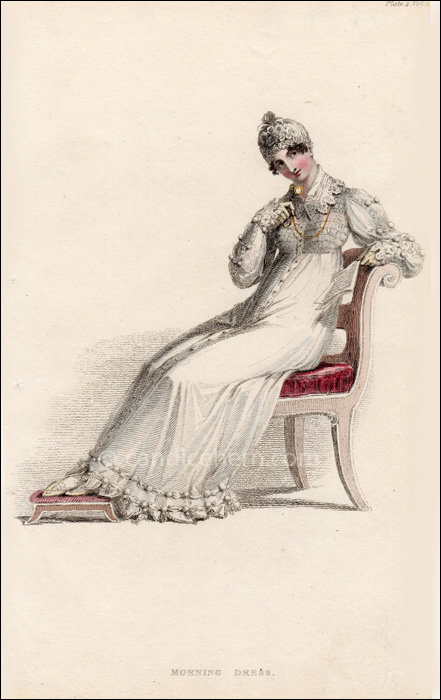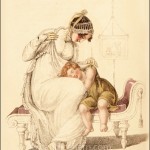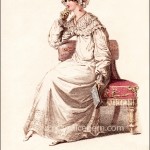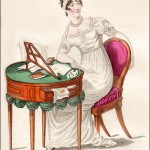Ackermann’s Repository of Arts, July 1814.
The long loose sleeves are typical for an indoor morning dress, which was a dress made for comfort, as explained here. Even so, this dress is full of intricate detail, lace, and other trimmings — the sort of dress only a very rich woman would wear to hang around the house.
Note also the quizzing glass on a gold chain, a very popular accessory for women at this time.
The print is described in the magazine as follows:
“A round robe of fine cambric or jaconet muslin, buttoned down the front and trimmed at the bottom with Vandyke lace, or needlework, headed with a double border of cotton ball fringe; full body, inlet with lace or needlework, confined by several drawing to fit the shape; falling collar, principally composed of lace or needlework, terminating at the edge with Vandyke trimming; long sleeves of considerable fullness, confined four or five times down the arm by ball fringe, and at the wrist bu a border of broad lace, vandyked to correspond. The Orange cap, composed of plain net, trimmed with a full quilling of narrow lace,and ornamented in the front with bows of lace, appliqued with edging. Slippers of primrose-coloured kid; gloves en suite.”
The “Orange” cap does not refer to the color, but to the House of Orange. Six months earlier, William I of Orange was proclaimed Sovereign Prince of the Netherlands after nineteen years in exile. Fashion often opted to name items of clothing or accessories after important people in the news.








